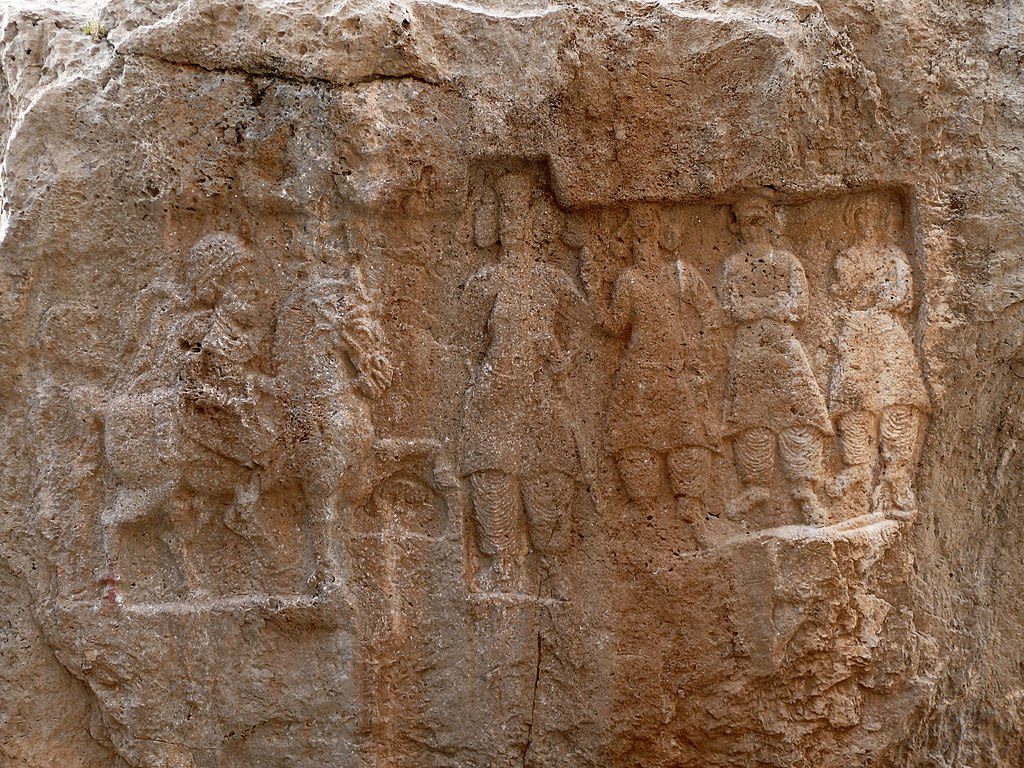Table of Contents
The Rise of the Sasanian Empire
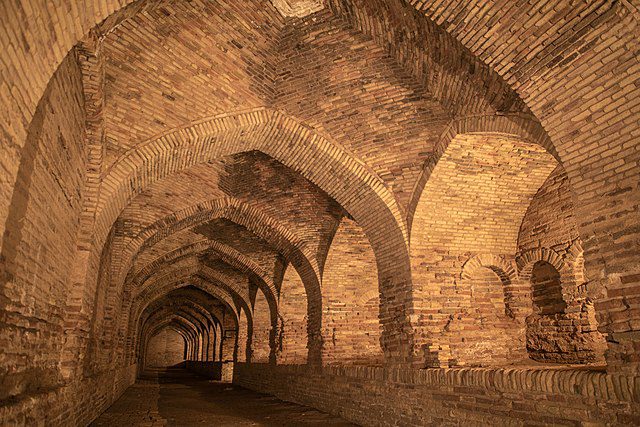
Considered the last pre-Islamic Persian empire, the Sasanian Empire, also known as Sassanian or Sassanid, emerged in 224 CE under the leadership of Ardeshir I. Descending from the lineage of Sasan and the son of Papak, Ardeshir I laid the foundation of a dynasty that would leave an indelible mark on Iranian civilization.
In the wake of Alexander the Great’s conquest of the Achaemenid Empire in 330 BCE, Persian culture found solace and resilience in the Parthian Empire, eventually reaching its zenith during the illustrious Sassanian Period. The fall of the Sasanian Empire in 651 CE marked a turning point in Iranian history, as no subsequent state would truly embody the essence of Iranian identity.
The Influence of the Seleucid and Parthian Empires
Following Alexander’s demise in 323 BCE, the Iranian Plateau came under the sway of Seleucus I Nicator, who established the Seleucid Empire. While the Seleucids ruled over the lands that make up modern-day Iran, their Greco-Macedonian origins prevented them from being embraced as native rulers. Despite the influence of Iranian subjects, the Seleucid Empire retained its Hellenistic character, leaving a longing for a truly Iranian state among the people.
In 155 BCE, the Parthians, a group of Northeastern Iranians, swept across the Iranian territories of the Seleucid Empire, breathing new life into the region. Yet, the Parthians, though refreshing for their Iranian subjects, still bore the marks of Hellenistic influence. Often overshadowed in European historical accounts by their conflicts with the Roman Empire, the Parthian culture’s significance has been unjustly neglected. It was Ardashir I, a true Persian hailing from the province of Fars (originally called Pars, giving birth to the term “Persian”), who brought an end to Parthian rule. Establishing his own dynasty under the revered name of Sasan, Ardashir I laid the groundwork for the rise of the formidable Sasanian Persian Empire.
The Relics of the Sasanian Empire
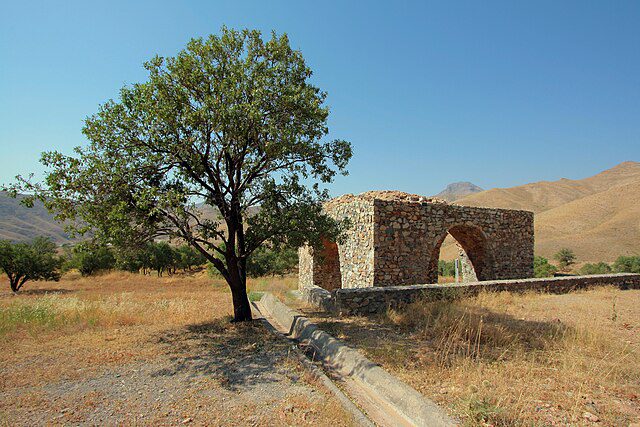
In a captivating archaeological breakthrough, a team of Iranian archaeologists has recently unearthed a treasure trove of ancient relics at a Sassanid site nestled within the northeastern region of Khorasan. The excavations have revealed an exquisite array of artistic works and compelling evidence, shedding light on the artistic and cultural patterns of Sassanid expertise in the region. Meysam Labbaf-Khaniki, a renowned Iranian archaeologist, describes these remarkable findings as a testament to the rich artistic legacy of the Sassanid Empire on the Iranian plateau.
Among the remarkable discoveries are plasterworks adorned with an extensive repertoire of motifs and images, which are distinct characteristics of Sassanid art in this region. Despite the ravages of time that have eroded some elements and introduced ambiguities, comparative studies of these delicate stucco paintings offer glimpses into the art schools and movements of both the Sassanid era and the early Islamic period.
The plaster carvings depict captivating themes such as coronation ceremonies, prayers, tributes, and mounted battles, providing us with captivating insights into the favored subjects of Khorasani artists during the late ancient era. Additionally, the decorative elements, including intricate plant designs, geometric motifs, and the unique attire of political and religious figures, add a distinct flavor to the art of Khorasan, setting it apart from other artistic expressions found throughout Iran.
Takht-e Soleiman
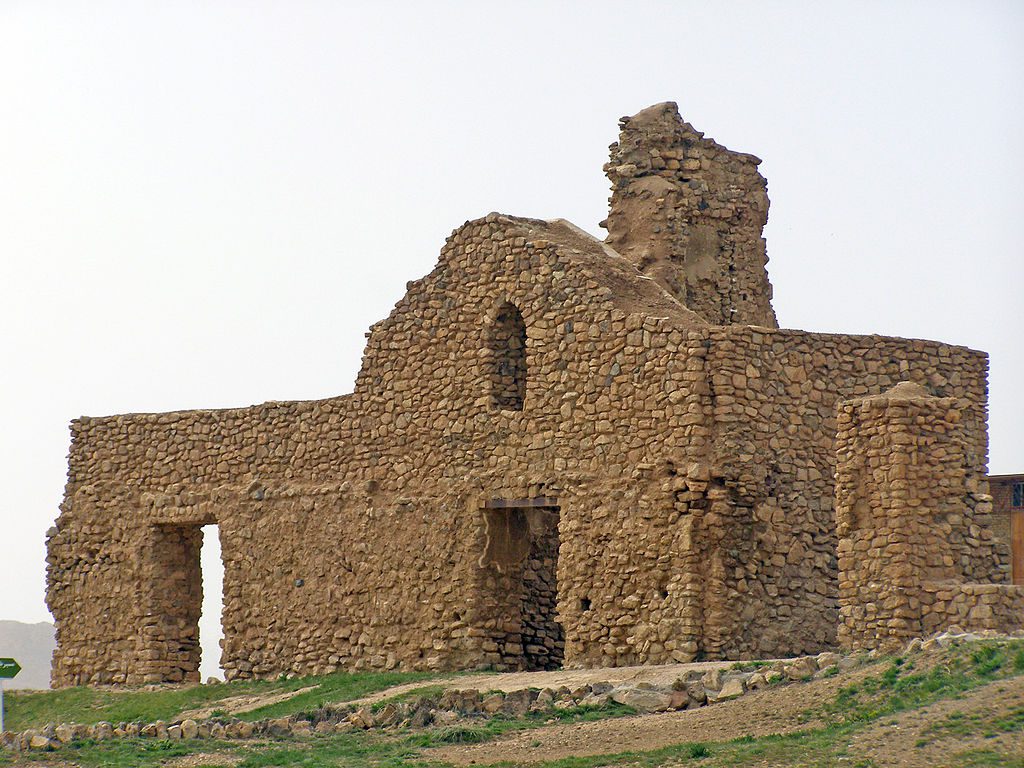
Takht-e Soleiman, a remarkable relic from the Sassanian Empire, stands proudly in the heart of West Azarbaijan, Iran. Nestled between the cities of Urmia and Hamedan, this archaeological marvel is situated just a stone’s throw away from the bustling town of Takab, approximately 400 kilometers west of Tehran.
One cannot help but marvel at the majestic setting of Takht-e Soleiman. The very hill it stands upon was formed by the outflow of a spring pond, abundant with calcium-rich waters. It is no wonder that this extraordinary site was bestowed the honor of being recognized as a UNESCO World Heritage Site in July 2003.
Legends and ancient texts speak of the prominence of this place, as it housed the revered “Adur Gushnasp,” one of the three “Great Fires” that Sassanian rulers would humbly approach before ascending the throne. This particular fire was dedicated to the valiant warriors of the Sasanid Persia, known as the Arteshtar. The strong foundations of the fire temple surrounding the pond are attributed to this mesmerizing tale, intertwining mythology and reality in a mesmerizing blend.
Taq-e Bostan
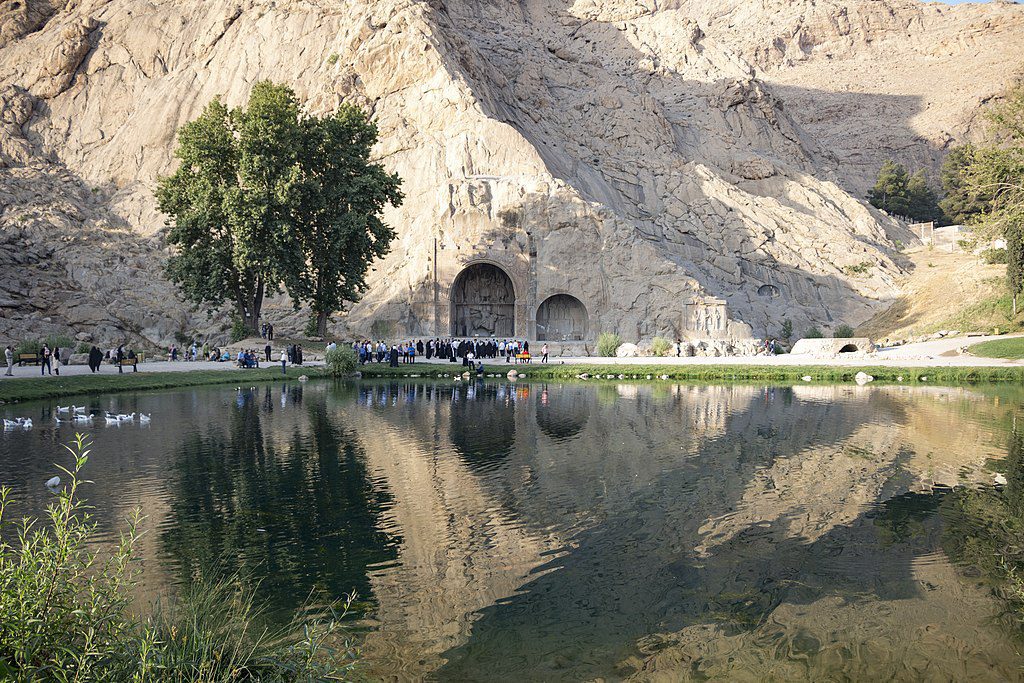
Taq-e Bostan, a captivating sanctuary located in the heart of Kermanshah, Iran, unveils a harmonious union between nature and human ingenuity, crafting a veritable paradise that has captivated the hearts of the Persians throughout history.
Taq-e Bostan not only embodies the devotion of the Sasanian emperors but also offers a glimpse into the water cult that shaped their beliefs. The rock-cut monuments that adorn this sanctuary are more than mere structures; they are windows into the collective consciousness of a civilization that revered nature and sought solace in its embrace.
Taq-e Bostan serves as a poignant reminder of the enduring human desire to create and connect with the divine. Here, the artistry of the past becomes a bridge to a shared understanding of our place in the world, transcending time and cultural boundaries.
FAQs about the Sasanian Empire
Q1: What was the Sasanian Empire?
A1: The Sasanian Persia Empire was a major Iranian empire that existed from 224 to 651 CE. It was the last pre-Islamic Persian empire and is known for its significant contributions to art, architecture, and literature.
Q2: Where was the Sasanian Empire located?
A2: The Sasanid Empire was primarily located in present-day Iran, Iraq, and parts of Armenia, Georgia, Azerbaijan, and Afghanistan. At its peak, it encompassed a vast territory stretching from the Euphrates River in the west to the Indus River in the east.
Q3: Who founded the Sasanian Empire?
A3: The Sasanian Empire was founded by Ardashir I, who overthrew the Parthian Empire in 224 CE. He established the Sasanian dynasty, which ruled over Persia for more than four centuries.
Q4: What were the major achievements of the Sasanian Empire?
A4: The Sasanian Empire made significant advancements in various fields. It had a well-developed administrative system, constructed grand cities and palaces, and fostered a flourishing artistic and cultural scene. The empire also promoted the Zoroastrian religion, which became the state religion.
Q5: What was the religion of the Sasanian Empire?
A5: The Sasanid Empire embraced Zoroastrianism as the state religion. Zoroastrianism, founded by the prophet Zoroaster, influenced the empire’s culture, legal system, and governance. It remained the dominant religion until the Arab conquest of Persia in the 7th century.
Q6: How did the Sasanian Empire decline?
A6: The Sasanian Empire faced several challenges that contributed to its decline. It engaged in numerous conflicts with the Byzantine Empire, which drained its resources and weakened its military. Additionally, internal political instability, economic issues, and the Arab Muslim conquests ultimately led to the empire’s downfall.
Q7: Who were the notable rulers of the Sasanian Empire?
A7: The Sasanian Empire had several notable rulers, including Shapur I, who expanded the empire to its greatest extent, and Khosrow I (Anushirvan), known for his administrative reforms and patronage of arts and sciences. Yazdegerd III was the last ruler of the empire before it fell to the Arab conquest.
Q8: What was the significance of the Sasanian Empire?
A8: The Sasanian Empire played a crucial role in shaping the history and culture of the Middle East. It preserved and transmitted the knowledge of ancient Persia, contributing to the development of Islamic civilization after the Arab conquest. Its legacy can be seen in the arts, architecture, and literature of the region.
Q9: Are there any surviving relics or remnants from the Sasanian Empire?
A9: Yes, there are several surviving relics from the Sasanian Empire. Notable examples include the ruins of the ancient cities of Ctesiphon and Bishapur, rock reliefs depicting Sasanian kings, and various artifacts and manuscripts housed in museums around the world. These remnants provide valuable insights into the empire’s history and cultural achievements.
Q10: How can I learn more about the Sasanian Empire?
A10: To learn more about the Sasanian Empire, you can explore books, academic articles, and online resources dedicated to ancient Persian history. Visiting museums with collections related to the empire can also provide a firsthand experience of its artifacts and cultural heritage.
Last Words: Experience the Best of the Sasanian Empire with a Customized Tour
The Sasanian Empire began in 224 CE with Ardeshir I as its leader. He started a dynasty that had a big impact on Iranian culture. After Alexander the Great conquered the Achaemenid Empire in 330 BCE, Persian culture thrived under the Parthian Empire, reaching its peak during the Sassanian Period. When the Sasanian Empire fell in 651 CE, it changed Iranian history because no other state fully represented Iranian identity afterward.
If you’re fascinated by ancient civilizations and eager to immerse yourself in the grandeur of the Sasanian Empire, then traveling to Iran is an absolute must. That’s where ToIranTour comes in. As a leading provider of Iran tours and travel packages, we specialize in creating bespoke itineraries that showcase the best of the Sasanian Empire and all that Iran has to offer.
Reach out to ToIranTour today and let us help you design the Iran tour of your dreams.

